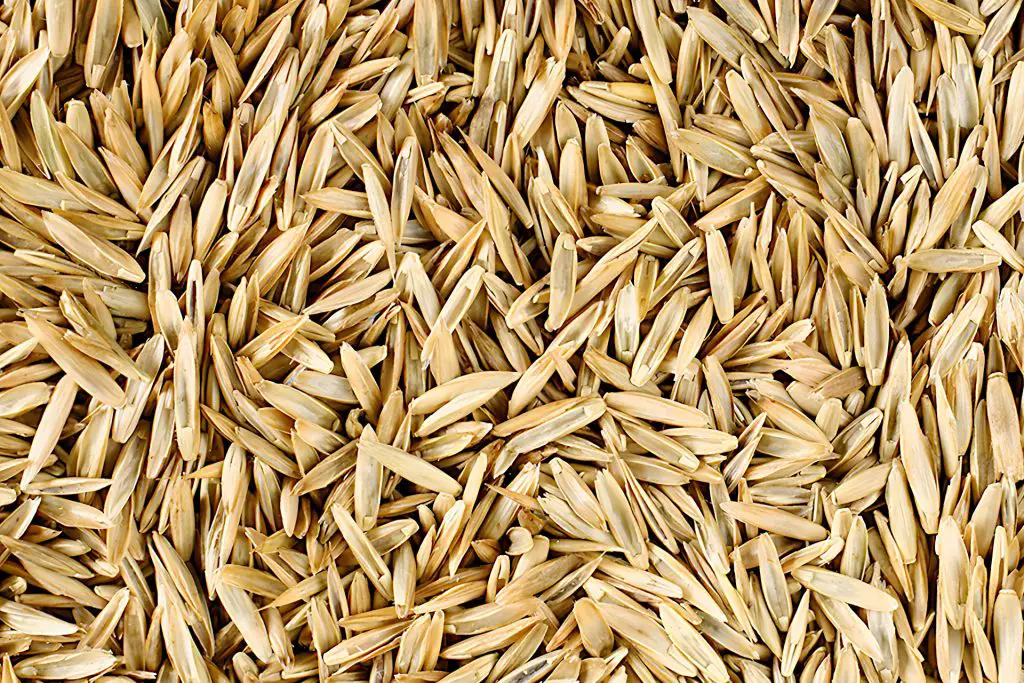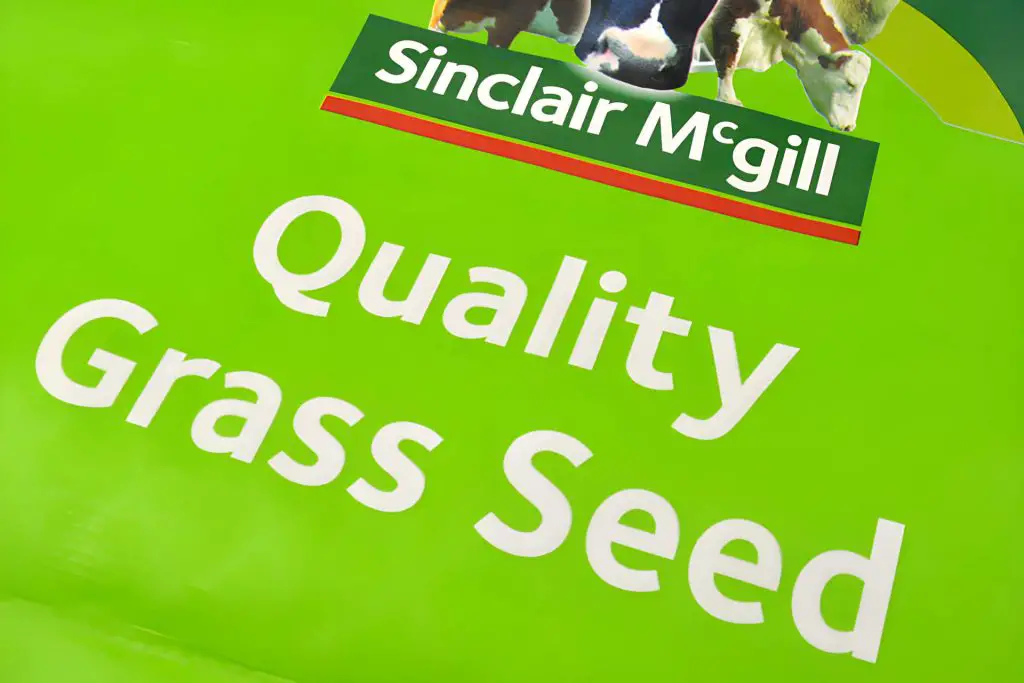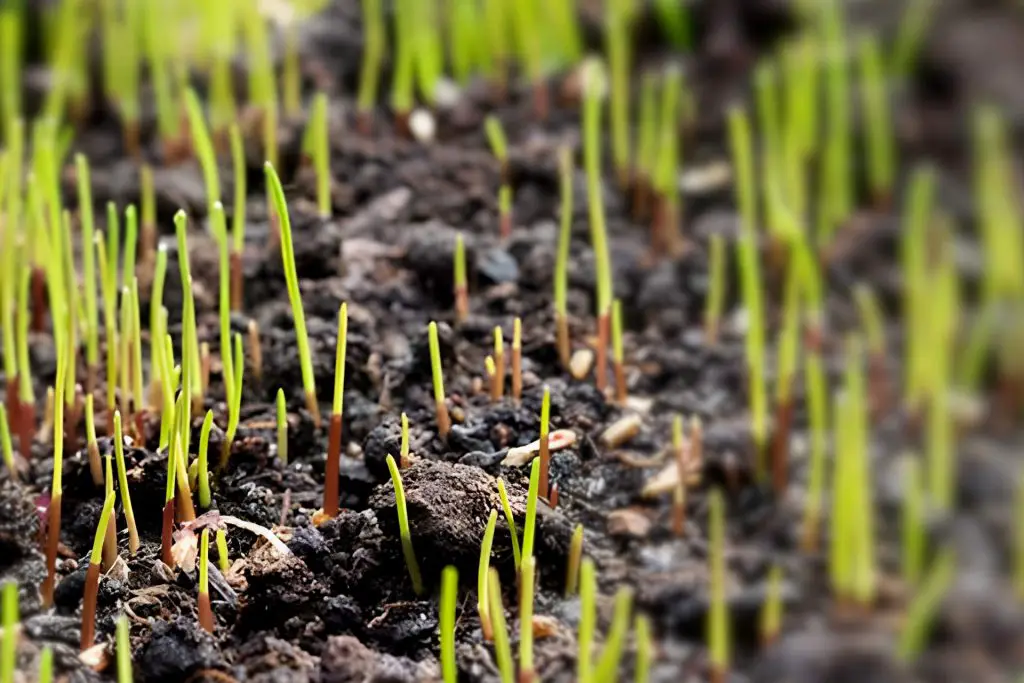Does Grass Seed Go Bad – How To Maintain the Viability of Your Grass Seed
If you have a lawn and have a good annual lawn care schedule in place it will probably involve overseeding. The chances are that you will overbuy the quantity of seeds that you require and you will confidently assume that you can use them again next year. When you come back a year later the seeds seem different in color maybe there is even some mold so have your grass seeds gone bad?
When you’re ready to sow your lawn, the last thing you want is for your leftover seed to be old and stale. But how can you tell if your seed is still good? In this article, we will look at how you can tell if your grass seed is still good, and how to store it so that it stays fresh.
No, grass seed does not go bad as such. However, it can lose its viability if it is not stored properly. Viability is the percentage of seeds that will germinate and produce new plants when they are planted. The ideal storage temperature for grass seed is between 40-60°F (depending on seed type). If the temperature gets too high or too low, the seeds can lose their viability.
What Does Viability Mean?

Grass seeds don’t technically go bad if stored correctly. Instead, they are measured by seed viability. What do we mean by viability?
Viability is the name given to the germination rate of grass seeds, which is the percentage number of seeds that will germinate. The older the grass seeds the less the germination rate.
So for example, newly harvested seeds might have a germination rate of around 90% whereas after three to five years the germination rate will have dropped to around 30-50%, although this varies significantly with different varieties.
What this means is that if you have bought fresh seeds (recently harvested) and put them down immediately around 90% will end up producing grass. If you store your seed correctly and use it after a few years the viability rate should not deteriorate too much.
The Shelf Life of Grass Seed?
When it comes to the question of how long grass seeds last, much will depend on the type and variety of seed.
Grass seeds are relatively short-lived compared to other types of seeds. The average shelf life is one to three years. However, this doesn’t mean that your seeds will lose viability as soon as they hit this mark. With proper storage, your seeds can remain viable for up to five years.
Certain varieties of grass seeds, such as creeping bentgrass, can remain viable even beyond if they are stored in a cool, dry place, while others, such as annual ryegrass, may only last for a few months. If you are not sure how long your particular type of grass seed will last, it is best to consult the manufacturer or a gardening expert.
What Are The Main Factors that Affect Viability?
The grass seed germination rate is determined by a lot of factors from the types of seeds, their age as well as the conditions in which they are planted.
However, the conditions in which they are kept have a significant influence:
- Moisture Levels
- Light
- Temperature
It has to be remembered that seeds exist to germinate. Germination is caused by water, oxygen, light, and nutrients being present as well as temperature. If you store your seeds in conditions where internal moisture levels are high, the temperature is too warm, or they are in the light, they will quickly lose their viability.
How to Store Your Seeds

When it comes to storing grass seed, there are a few things you need to keep in mind in order to ensure the longevity and quality of your seed. First and foremost, you need to make sure that the temperature is controlled. If it is too hot or cold, your seed will degrade. The ideal temperature for storing grass seed is between 41-60°F, depending on the type.
In addition to temperature, you also need to control the moisture levels of your storage area. If it is too moist, your seeds could rot; if it is too dry, they could become brittle and break easily.
Because of the humidity factors, it is important to consider the type of container you store your seed in. You want to make sure that the container is airtight and moisture-proof. The best containers for storing grass seed are glass jars or plastic storage boxes.
Finally, you need to keep your seed away from light. Light can cause the grass seed to germinate, which will obviously shorten its shelf life.
The best way to store grass seed is in dry conditions, a dark, cool place. Often the best storage location is the coolest location that is not prone to moisture buildup, such as a basement, cellar, or outhouse is the best option.
Looking for Signs of Lack of Viability
There are several indicators to look for in terms of the viability of your grass seed before planting. These tell-tale signs that your grass seed is not or may not still be viable.
When looking for signs that grass seed will not germinate at a viable percentage, the most common indicators are mold or mildew. If you see either of these present on the seed, it’s likely that the seed is no longer viable.
Another way to tell is by its color; if the seed seems discolored, has lost its green color and looks pale or yellowish, a sufficient percentage is probably not going to germinate. Finally, if the seeds are cracked or broken, they’re also likely to be past their prime.
Testing Your Seeds
Before discarding old seeds you can perform a simple test to see if they are likely to still be viable. You just need a damp paper towel or cloth, a tray or container, cling film, or transparent bag as a covering, and some light.
- Add about an inch of water to the tray or container
- Soak the paper towel in the water
- Put a handful of seeds on the paper
- Cover will Clingfilm
- Bring out into the daylight.
After around fourteen days the seeds should start to show signs of germination. If a good percentage show signs then the seeds are viable, if only a few then they are no longer viable.
How to Take Care of Your Grass Seeds to Ensure a Healthy Lawn
Irrespective of how well you have taken care of your grass seed viability also depends on several other factors to ensure you end up with a healthy lawn. These include climate, timing, and preparation.
Climate and Seed Choice
Climate is very important and affects the viability of the seed you plant. There are two seed types, warm-season, and cool-season. Choosing the wrong type will drastically affect the viability of the seed as the temperature of the soil influences when warm-season and cool-season grasses begin to grow and when they begin to go dormant.
Warm-season and cool-season grasses grow and rest at different times depending on soil temperature. Warm-season grass goes dormant at 65°F, while cool-season grass goes dormant at 45°F, which is about twenty degrees lower. Furthermore, when temperatures reach over 70°F, the growing cycle of cool-season grass slows dramatically.
Timing – When You Should Plant
The question of timing when to seed or overseed a lawn follows is an extension of the variety of grass seed that you need to use.
If you live in a zone that requires warm-season grass then you need to plant when temperatures are above 65°F. Depending on where you are this could be early spring through summer. If you plant when the temperature is below your seeds won’t germinate properly.
Similarly, for cold-season areas, spring or fall is the best time to seed, when the temperature is above 45°F but below 70°F. Planting in the winter or high summer will drastically affect the viability of the seeds.
Ground Preparation

Finally, The way you prepare the area to be seeded or overseeded will have a considerable impact on viability. It is important to make sure the soil is in the best condition. It should be aerated and tested with the right amendments added to get the pH levels in balance and fed with the right fertilizer to ensure adequate nutrient levels.
If you follow these guidelines, keep your soil moist, you will get better germination rates and have a much better chance of having a healthy lawn that will last for years to come!
How to Ensure Grass Seeds Remain Viable for Several Years
The viability of your seeds starts at the point of purchase. There are a number of different factors that you need to consider to get the best germination rate over several years.
Types of Grass Seed
As we have already mentioned climate conditions are crucial. If you live in a warm-season or cool-season zone, you need to purchase varieties of seeds that are appropriate. You will find that cool-season varieties such as Kentucky bluegrass are larger and generally have longer shelf lives.
If you live in a transitional zone then your individual climate conditions are likely to dictate what is best. Ask at your local garden centers what they recommend. It is not uncommon to have a mix of varieties.
Freshness
It might sound obvious but fresh grass seed is better. If it is so obvious why mention it? The main reason is that unless there is a date referencing this on the packaging you may not know how old the seed you are buying is. Often this date is on the packaging but sometimes not. Don’t be surprised to find bags of grass seed already a year old being sold.
Amount
Don’t buy too much. You will probably assume that if you buy too much you can use these later and as we have seen that is perfectly possible. The truth is the best quality seeds are the freshest seeds, so it is always better to have newer seeds.
Work out the square footage of the area you need to cover and carefully calculate. Most suppliers have square feet coverage on their packaging. Add around 10% to be safe and the leftover amount of seeds should be a reasonable enough amount to store and use the following year for overseeding in order to maintain a healthy green lawn.
Summary: Does Grass Seed Go Bad
As we have seen there are a number of factors that affect the shelf-life of grass seeds. It all though starts at the point of purchase. Purchasing the right type of seed in the right amounts is always the best strategy.
The seeds that you have left over should then be stored in the correct conditions, in airtight containers, avoiding a humid environment and in a cool dark place. This will help to prevent mold and mildew from growing on the seeds and maintain viability.
By doing this you can be reasonably sure that the seeds you use provide you with best possible start of creating a great lush green lawn.
